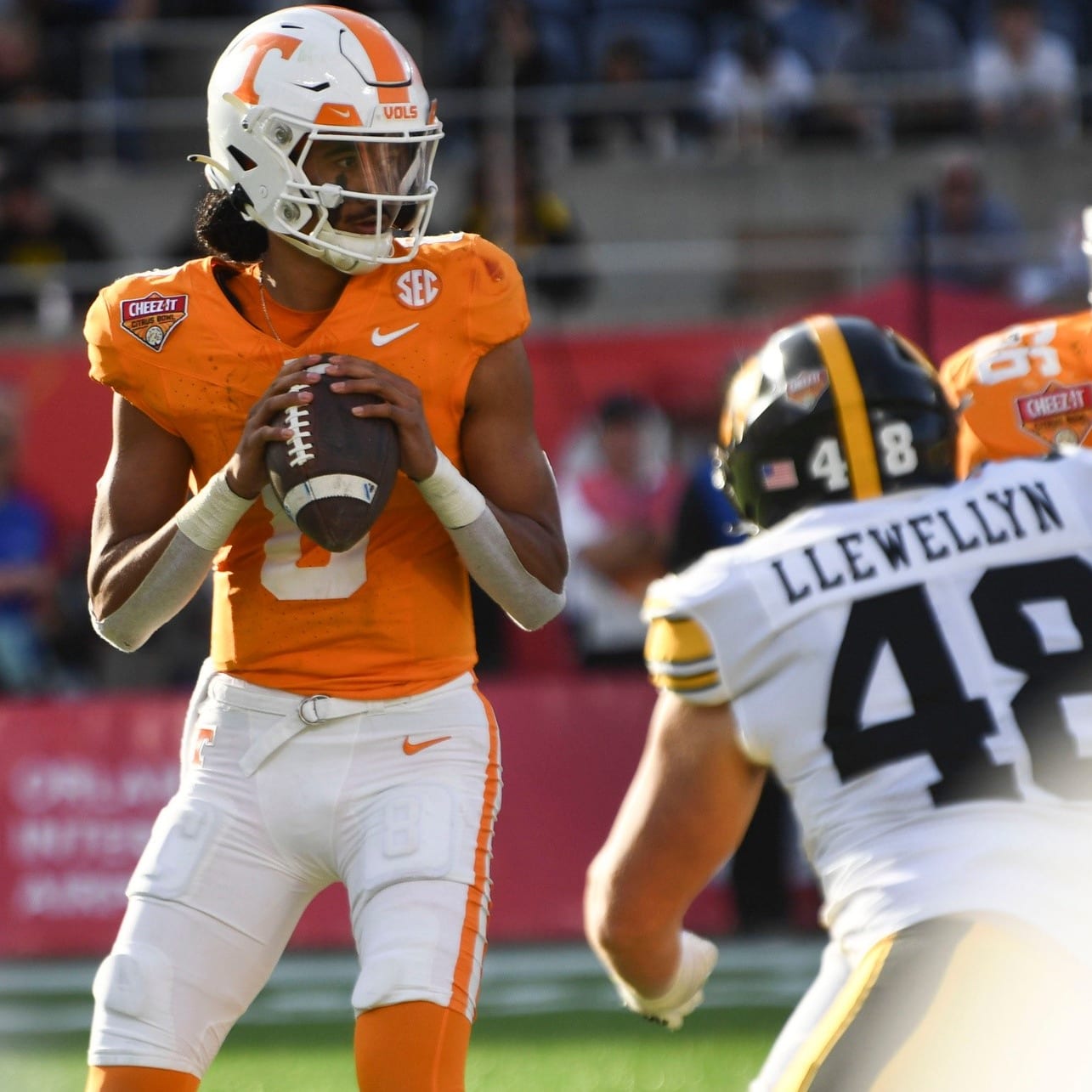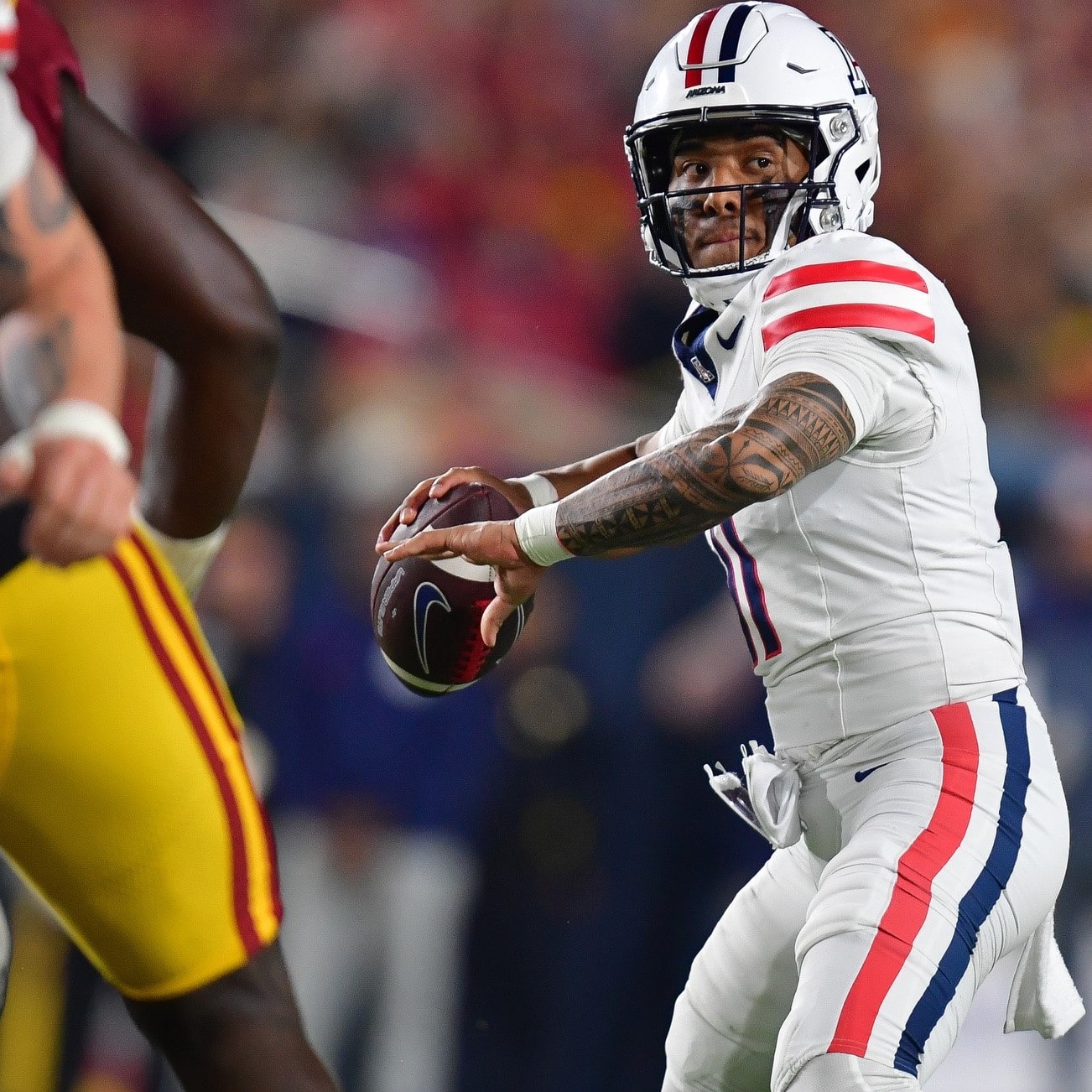This article is part of our Conference Preview series.
While the seasons of many conferences are already underway, the Big Ten is gearing up to start football Oct. 23 with Illinois at Wisconsin and to finish out the opening weekend with six more games Oct. 24. The teams will play eight games in the regular season, followed by a "Champions Week" where the matching seeds from each division will square off in the final weekend of the Big Ten campaign.
Due to a smaller season schedule than some of the other conferences, the rankings among the Big Ten players nationally are depressed a bit. If you're looking for a better feel at per-game projections, feel free to navigate to this page and sort by points per game (ppg). The Big Ten as a whole is typically celebrated as a running-back rich league, but that may not be the case in 2020. Wide receivers are particularly strong with Rondale Moore, Chris Olave and Rashod Bateman heading the list, while the quarterback position also has some star power at the top in Justin Fields. You can find the rest of the biggest fantasy contributors listed below.
All-Big Ten Fantasy Team (2020 Position Rank)
First Team
QB: Justin Fields, Ohio State  (5)
(5)
RB: Journey Brown, Penn State 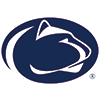 (16)
(16)
RB: Stevie Scott, Indiana 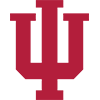 (43)
(43)
WR: Rondale Moore, Purdue  (13)
(13)
WR: Chris Olave, Ohio State  (21)
(21)
TE: Pat Freiermuth, Penn State  (11)
(11)
Second Team
QB: Joe Milton, Michigan  (42)
(42)
RB: Trey Sermon, Ohio State  (44)
(44)
RB: Nakia Watson, Wisconsin  (57)
(57)
WR: Rashod Bateman, Minnesota  (29)
(29)
WR: Jahan Dotson, Penn State  (30)
(30)
TE: Peyton Hendershot, Indiana  (14)
(14)
Third Team
QB: Sean Clifford, Penn State  (44)
(44)
RB: Dedrick Mills, Nebraska  (58)
(58)
RB: Mohamed Ibrahim, Minnesota  (59)
(59)
WR: Garrett Wilson, Ohio State  (40)
(40)
WR: David Bell, Purdue  (72)
(72)
TE: Payne Durham, Purdue  (17)
(17)
Sleepers
Jack Plummer (75)/Aidan O'Connell (110), QB, Purdue 
The Purdue passing offense experienced a bunch of turnover during the 2019 campaign, starting the season with Elijah Sindelar under center before a collarbone injury ended his career after just three appearances under center. Plummer the led the offense for six-plus games, turning in 1,603 passing yards and an 11:8 TD:INT ratio before he too suffered a season-ending injury in the form of an ankle issue. That gave way to O'Connell, who finished out the last four games completing 62.6 percent of his passes for 1,097 yards and an 8:4 TD:INT ratio. With Sindelar out of the picture, it becomes a two-man race for the starting job in an offense that averaged 309.9 passing yards per contest last season. With little change to an underwhelming rushing attack and the return of All-American Rondale Moore. Having both Rondale Moore and David Bell available in the offense should make the Boilermakers a formidable threat in the passing game and whoever wins the job out of the two signal-callers should put up big enough numbers to outstretch the current projections. It also helps that Purdue avoids all of the big dogs in its crossover contests with the Big Ten East, facing just Indiana and Rutgers.
Tyler Goodson, RB, Iowa  (77)
(77)
Goodson eased his way into the offense early in the season, tallying double-digit carries just twice in the first seven games of the campaign. That changed down the stretch, as Goodson took over the lion's share of the work and reached double-digit totes five out of the last six contests, including each of the last four. Goodson proved to clearly be the best option in the run game and should enter 2020 as a candidate for a workhorse role. There may also be a shift toward a more ground-heavy approach from the Hawkeyes this season with redshirt sophomore Spencer Petras set to take the reins from four-year starter Nate Stanley. Petras has attempted just 11 total passes in his first two seasons at Iowa City, though it's worth noting the team returns nearly all of its weapons among pass-catching options from a season ago. Goodson can help out in that facet of the game as well, reeling in 24 of his 28 targets for 166 yards a season ago.
Ronnie Bell, WR, Michigan  (88)
(88)
Bell paced the Wolverines last season with a 20.9 percent target share, amassing 84 on the season and hauling in 48 of them for 758 yards and a touchdown. While Shea Patterson is gone and expected starter Dylan McCaffrey has entered the transfer portal, Joe Milton is set to take over under center instead. It's possible the Wolverines may see a slight downgrade at quarterback, but that could also be the product of most of last year's target share behind Bell, with Nico Collins opting out, Donovan Peoples-Jones moving on to the NFL and Tarik Black transferring to Texas. The lack of experience behind Bell this year could lead to an even larger target share for the junior wideout. While the overall totals will likely not match his efforts from last year due to the shortened season, his per-game averages have a great chance of improving in his second season as a full-time starter.
Wan'Dale Robinson, WR, Nebraska 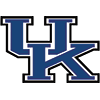 (109)
(109)
Robinson was the Cornhuskers' best all-around weapon in 2019 when healthy, turning in three massive fantasy efforts versus Ilinois, Northwestern and Purdue at various points in the campaign. The primary concern for him was getting and staying healthy. The true sophomore battled injuries throughout his freshman campaign, missing a pair of games while also being limited on numerous occasions down the stretch. It's not a particularly good sign that he was dealing with an injury early in fall camp, but he's reportedly back at 100 percent and if he can stay on the field in 2020, he certainly has the upside among receivers to turn in a valuable campaign. While he's expected to work primarily as a receiver this season, Robinson should still get some occasional touches out of the backfield and coach Scott Frost will likely look to get the ball in his hands as often as possible.
TE: Jake Ferguson, Wisconsin  (21)
(21)
Ferguson saw a dip in his numbers last season when many expected him to see a marked improvement. It's possible that Jack Coan under center didn't have a great connection with the junior tight end, but he's now set up with redshirt freshman Graham Mertz to open the season. This throws a bit of a wrench into the target share expectations for the Wisconsin pass catchers, but the absence of target-share leader Quintez Cephus (NFL) from last season should position Ferguson for a larger chunk of looks again in 2020 regardless. He and the Wisconsin offense will also avoid some pitfalls in the Big Ten East in Ohio State and Penn State, though they will face Michigan at The Big House.
Busts
Joe Milton, QB, Michigan  (42)
(42)
Milton spent the last two seasons developing in the Michigan system and must have outplayed heir-apparent Dylan McCaffrey by enough that the redshirt senior elected to transfer before the season. That being said, the same thing that should prove beneficial for Ronnie Bell noted in the sleepers section above applies a negative light on Milton. He will have a fairly bare cupboard at his disposal in terms of returning talent in the pass-catching options, with three of the top four targets from a season ago all unavailable to him in 2020. That doesn't mean that there isn't talent waiting in the wings for the Maize and Blue, it just wouldn't be shocking to see the passing game go through some growing pains given the significant turnover. Michigan also faces a tough road in a shortened season with Ohio State, Penn State and Wisconsin all on the schedule. I don't expect Milton to flop completely as a quarterback, but other Big Ten quarterbacks like Sean Clifford, Adrian Martinez, Michael Penix and Tanner Morgan may wind up being better positioned to succeed.
Nakia Watson, RB, Wisconsin  (57)
(57)
Watson may be in line for the first crack at the Wisconsin primary running back duties in 2020, which should prove to be a fruitful endeavor like usual. However, Watson wasn't particularly convincing in his role behind Jonathan Taylor last season, averaging just 4.5 yards per attempt (compared to Taylor's 6.3 YPC). Combine that with a reasonably stocked running back room with a number of names who could emerge from the pile, and I'm not convinced quite yet that Watson will ultimately wind up as the team's leading rusher this year. For what it's worth, head coach Paul Chryst mentioned Watson, Garrett Groshek (passing down specialist) and Isaac Guerendo, who is still raw moving over from wide receiver, as the likely primary ballcarriers this season. If that remains the case, Watson could be headed for a significant workload, but redshirt freshman Julius Davis and true freshman Jalen Berger could work their way into the conversation.
Trey Sermon, RB, Ohio State  (44)
(44)
This placement isn't an indictment of Sermon, who I expect to be fairly efficient in the running game as most Buckeye backs have been in recent seasons, but rather my expecting his workload percentage to be significantly reduced compared to that of J.K. Dobbins last season. Master Teague emerged as the clear No. 2 option in Ohio State's backfield last season, running 135 times for 789 yards and four touchdowns, which equates to just over 10 carries per contest. On the other hand, Dobbins ran the ball north of 21 times per game en route to 2,003 yards and 21 touchdowns. The coaching staff hasn't really named a starting back heading into the season and, in fact, suggested there may be a timeshare between both Sermon and Teague this year. With a less clearly defined leader in the backfield, I'm wary of expending a high-round draft pick on Sermon, when I could just as easily see it being Teague who winds up with the largest carry count in 2020.
David Bell, WR, Purdue  (72)
(72)
After a phenomenal freshman campaign that resulted in 1,035 receiving yard and seven touchdowns on 86 receptions (131 targets), I'm expecting some regression from Bell in his sophomore campaign. The primary reason for that is the return of All-American Rondale Moore, who typically lines up in the same spot that featured Bell and figures to reprise that role after an even better campaign during his freshman campaign in 2018. Even in the first two games of 2019, Bell managed just a total of five catches for 131 yards and a touchdown on seven targets. That's a far cry from the volume he received following Moore's departure. Moore departed early against Minnesota, a game where Bell took over and racked up 15 targets and 114 receiving yards on eight grabs. Despite multiple quarterback changes, Bell averaged 13.3 targets per contests after totaling just 11 in the first three games with Moore active. While he's unlikely to regress back to his 3.7 targets per contest from early in 2019, Bell seems unlikely to see as many passes tossed his way as he did as the featured wideout.







